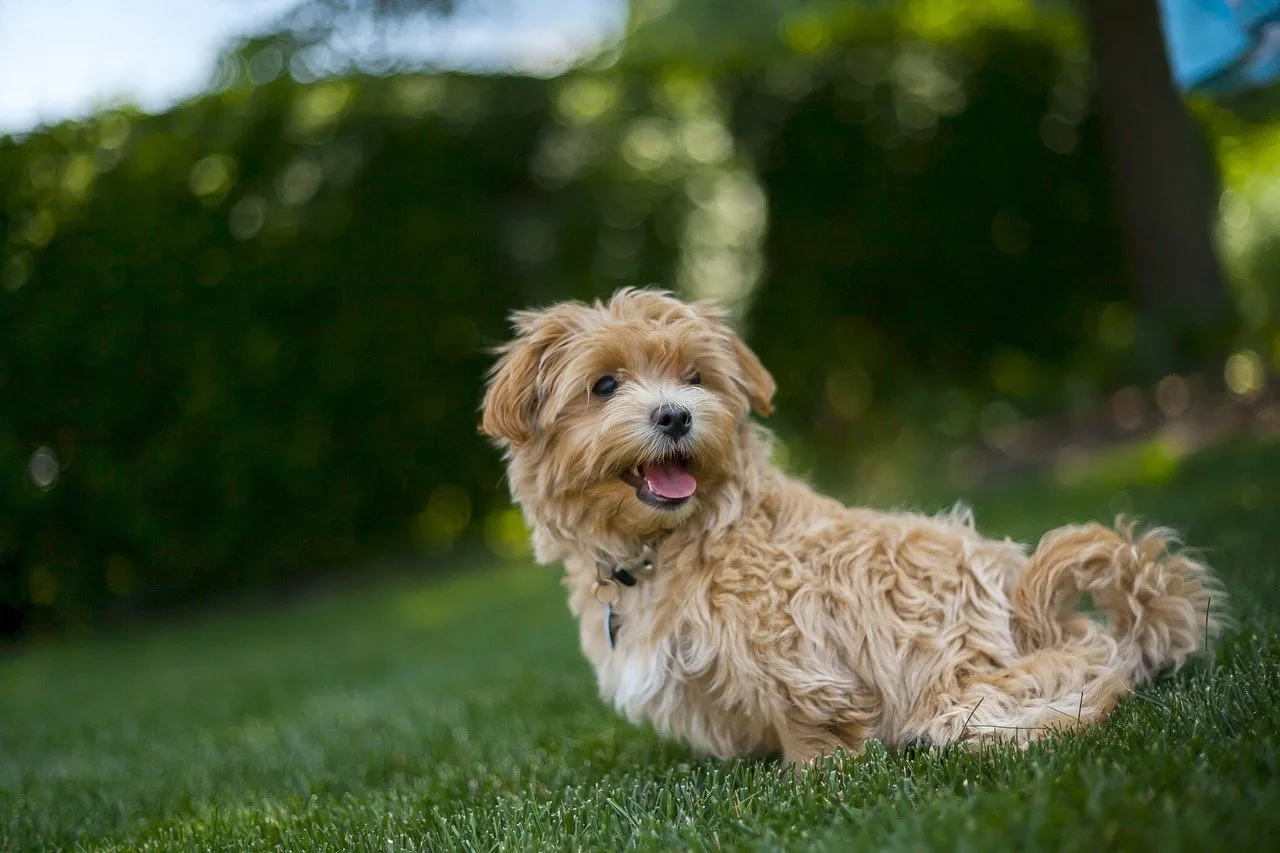Have you ever heard of or seen a full grown Maltipoo? If not, then get ready for a whole lot of cuteness! The Maltipoo is a designer dog or designer breed. It is the result of mixing the Maltese and Poodle.
There are so many unexpected traits about the Maltipoo. For example, we know that Maltese dogs are always white, while Poodles come in a variety of beautiful colors. In the case of this small dog, their mix because of the Poodle genes, he is available in a variety of colors too.
Of course, many other traits are important to this designer dog, for example, how big will Maltipoo get, are Maltipoos high maintenance, what are the downsides of a Maltipoo, and so on.
| Size | Small |
| Height | 10 to 14 inches |
| Weight | 5 to 20 pounds |
| Lifespan | 10 to 15 years |
| Price | $600 to $4,000 |
| AKC Recognition | No |
In this article, we will cover all of those and many other topics related to this designer dog, and we will answer the most commonly asked questions about the Maltese and Poodle mix.
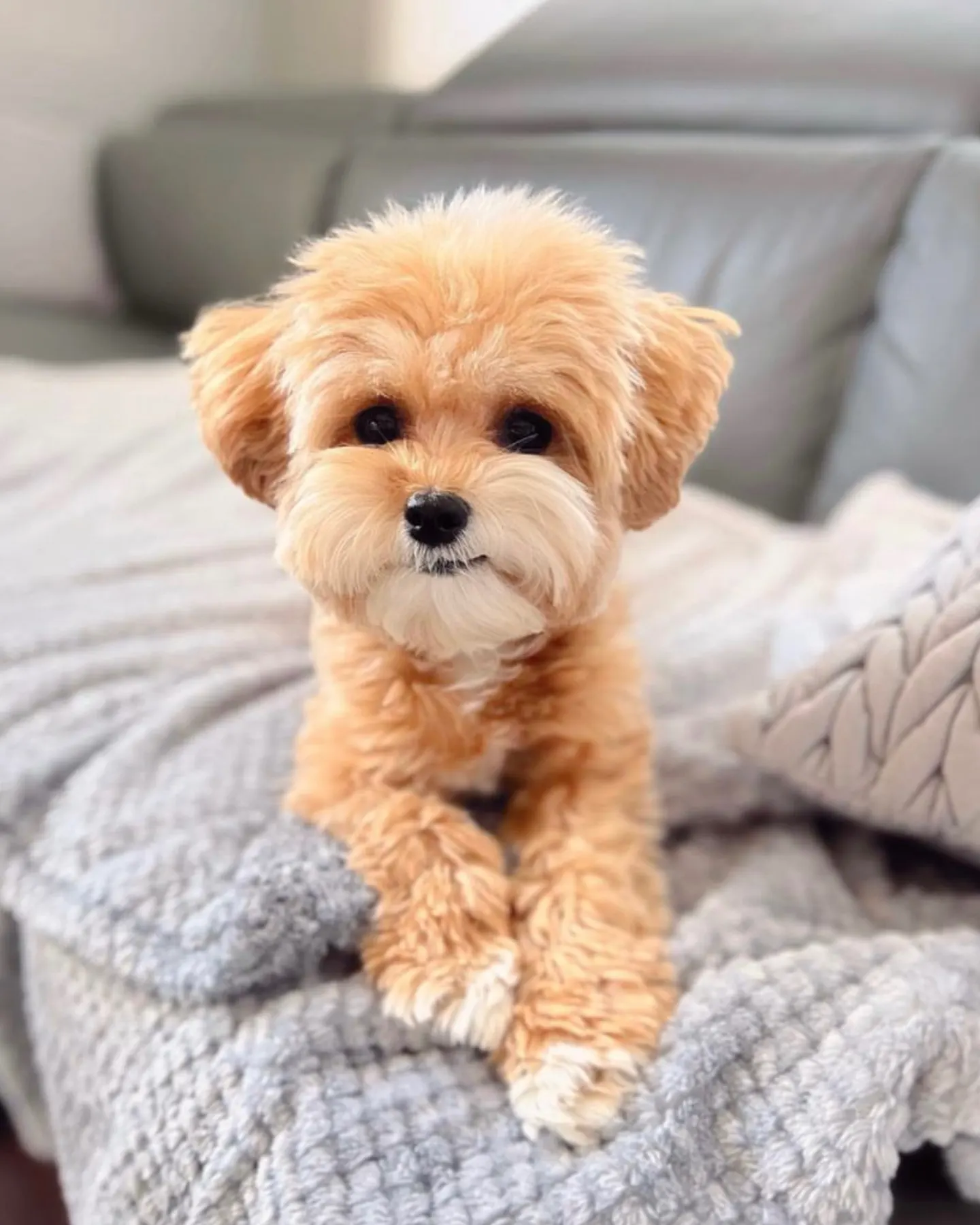
Source: Instagram (@maltipoo.mabel)
Full grown Maltipoo – Breed history ⏳
With designer dogs, we sometimes don‘t know when they were developed, who developed them and what the reason behind creating them was. This is because they were developed such a long time ago and no one kept track of that information. There are also mixed breeds that are simply still a very young mix so there is no history to them.
When it comes to the history of the Maltipoo, it‘s the latter case.
The Maltipoo breed was created in recent years, so there isn‘t much information. We do know that they have been created in the last 10 to 20 years. For a very long time, we didn‘t even know where they were created. But, according to many experts, the Maltipoo was developed on a small island off the coast of Malta. The reason why the Maltese and Poodle were bred together was to create a dog breed that sheds minimally.
Companion dog
The Maltipoo was developed as a companion dog for people with allergies. We want to be completely honest, it is debatable whether this mix is truly hypoallergenic. The truth is, no dog is hypoallergenic and all of them create a different quantity of allergies. It is just that some dogs cause a minimal amount of allergic reactions to their owners. We will take a closer look at this topic in one of the following sections of this article.
But, either way, the Maltipoo has gotten very popular in the last couple of years, especially among celebrities. Because this is not a purebred dog, they are also not recognized by the American Kennel Club, but because of their immense popularity fans have formed the North American Maltipoo/Maltepoo Club and Registry.
With that being said, let us take a look at the history of both parent breeds.
Maltese dog history
Little is known about the current Maltese’s origins and expansion. It is said to have descended from spitz-type dogs in south-central Europe, where it may have resembled the current Pomeranian at first. The Maltese, as her name implies, is from Malta, an archipelago located beneath Sicily. While it is unknown how the dog came to be, it is known that the Greeks and Romans who occupied the area in ancient times cherished the little white canine, elevating her to status symbol levels.
Many people believe the breed originated on the Mediterranean island of Malta from Spitz or Spaniel-type dogs. Some say he was produced in Italy, while others claim he originated from Asia and contributed to the development of many of the smaller Asian canines.
Popular canines
The Maltese prospered wherever he came from. He had secured a strong place in the arms and hearts of French nobility by the 15th century. Maltese landed in the British Isles during Henry VIII’s reign. The Maltese had become a beloved pet for noble and royal ladies by the end of the 16th century. Queen Elizabeth I, Mary Queen of Scots, and Queen Victoria all adored the small dog. Many painters, notably Goya and Sir Joshua Reynolds, used these little dogs in pictures of beautiful women.
Although the Maltese survived the fall of the Roman Empire and the Dark Ages, he was nearly extinct in the 17th and 18th centuries when attempts were made to breed him to be the size of a squirrel. Following this nearly fatal experiment, breeders attempted to save the breed by combining it with Poodles, small Spaniels, and East Asian miniature dogs. As a result, the Maltese became so diverse that several new breeds emerged. Many people believe that Maltese are the ancestors of the Bichon Frise, Bolognese, and Havanese breeds.
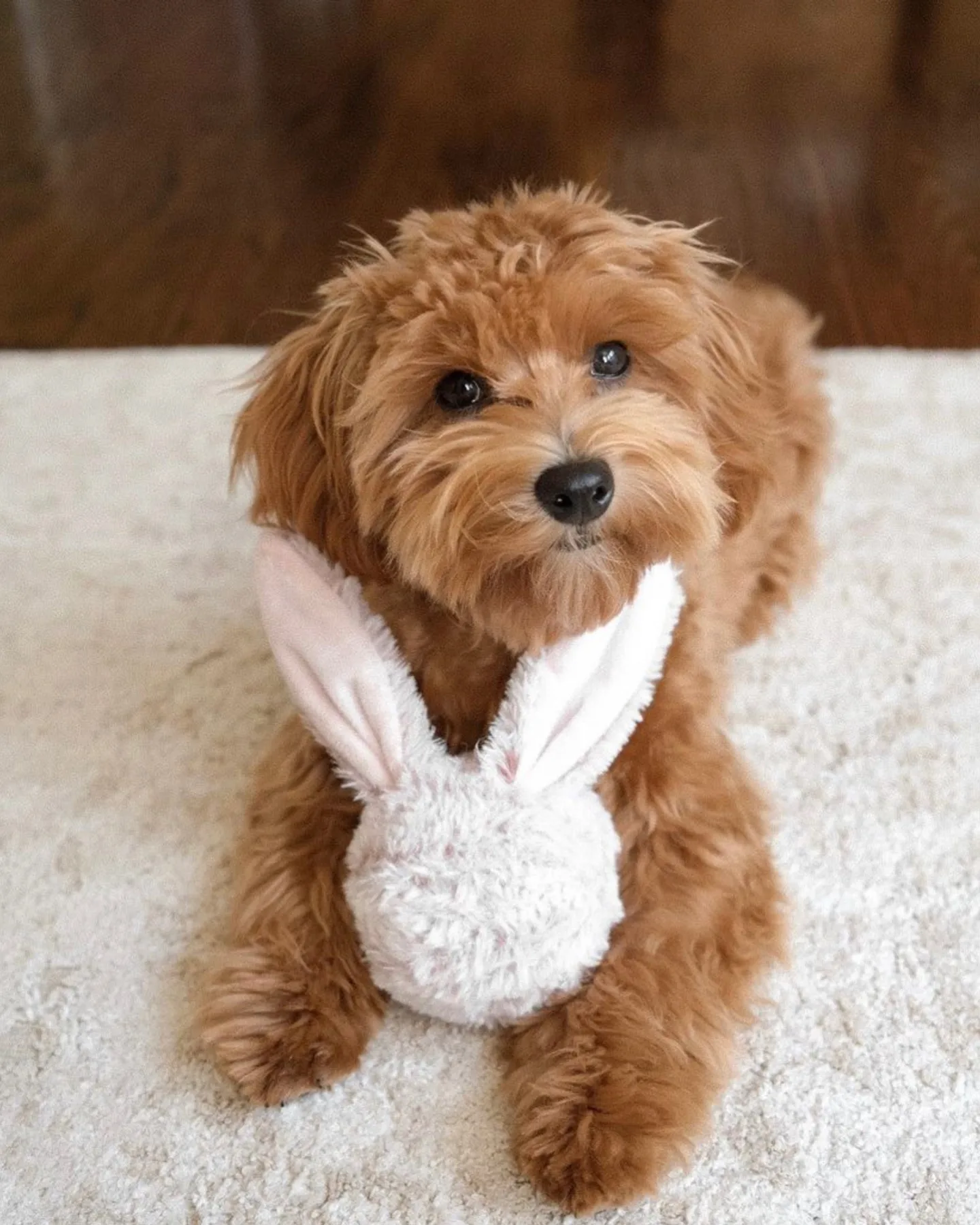
Source: Instagram (@teo.themaltipoo)
Maltese in the US
The Maltese as we know them now were created by English breeders. Many Maltese in the United States today trace their ancestry back to English immigrants. Maltese was first spotted in the United States in the late 1800s. In the 1870s, they were entered in the first Westminster Kennel Club exhibitions.
Until the 1950s, the number of Maltese dogs registered with the AKC climbed steadily. Since then, the breed has grown in popularity. Maltese are one of the most popular breeds among dog show fans, typically winning the Toy Group. They also have a strong showing in the “Best in Show” category.
The American Kennel Club recognized the breed in 1888. It was finally acknowledged by the Fédération Cynologique Internationale in 1955, during the annual meeting in Interlaken, Switzerland, under the sponsorship of Italy. Parti-color and solid-color dogs were accepted in the show ring in England from 1902 to 1913, and as late as 1950 in Victoria, Australia.
Poodle dog history
The Poodle is one of the earliest breeds that was created specifically for waterfowl hunting. Poodles are supposed to have originated in Germany, where they were known as Pudel, which translates as “splash in the water,” a reference to their profession as water retrievers.
Many people believe that the breed evolved through crosses between many European water dogs, including Spanish, Portuguese, French, German, Hungarian, and Russian water dogs. Others believe that the North African Barbet, which was introduced to the Iberian Peninsula, is one of the Poodle’s forebears.
The Standard Poodle is the most traditional of the three Poodle breeds. By choosing a lower size, the Miniature and Toy were produced. They were working dogs as well. Toys and Miniatures were popular circus dogs because of their intelligence, joy of performing, and capacity to learn tricks, and they are supposed to have searched out truffles, a sort of edible fungi that grows underground.
Mini, Toy, and Standard
Although some claim that Miniature and Toy Poodles appeared soon after the Standard, many believe that it wasn’t until the 1400s that breeders began developing smaller versions of the Poodle — first the Miniature, then the Toy — to amuse the Parisian bourgeoise. Toy and Miniature Poodles were formed by mating little Poodles together, not by mating Poodles with smaller breeds.
The larger Standard Poodle was used for duck shooting, while the Miniature Poodle was utilized to search out truffles in the woods. The primary function of the little Toy Poodle, on the other hand, was to accompany the royalty and wealthy merchant class. The nickname “sleeve dogs” came from well-to-do owners in the Renaissance who carried their Toy Poodles in their wide shirtsleeves.
Poodles in the United States and the United Kingdom
Curly-haired dogs gained popularity in England and Spain, but they were cherished in France. Toy Poodles were a favorite of King Louis XVI, and the breed was dubbed “France’s National Dog.” Poodles first gained popularity as companion animals in France, and they continue to do so to this day. They are popular all over the world and are constantly ranked among the top breeds. Today, the Miniature is the most popular of the three sizes, and the three kinds together rank tenth in popularity among American Kennel Club-registered breeds.
In 1874, the Kennel Club in England registered the first Poodle, and two years later, the first British club for Poodle fanciers was on the scene. Although it is unknown when Poodles initially arrived in the United States, the American Kennel Club registered the first Poodle in 1886. The Poodle Club of America was formed in 1896 but collapsed soon after. In 1931, a group of poodle fans resurrected the club.
Until after World War II, poodles were very uncommon in the United States. However, by the mid-1950s, the Poodle had risen to become the country’s most popular breed, a position he kept for more than 20 years.
Poodle parent breed standard
Poodle Appearance
Poodles are unquestionably among the most elegant companion dogs on the planet. They are also one of the most popular breeds among allergy sufferers. This is because the Poodle is a non-shedding breed that is good for allergy patients. Many allergic people can keep a Poodle without problems.
Fun fact: The exaggerated show cut that we see today evolved from a practical strategy to keep the dog’s joints and torso warm in chilly water.
The fur of the Poodle is silky, fluffy, and dense. It is not affected by seasonal changes and continues to grow indefinitely. Poodles do not shed, have low dander, and require frequent grooming. The hair is wavy, wiry, and dense.
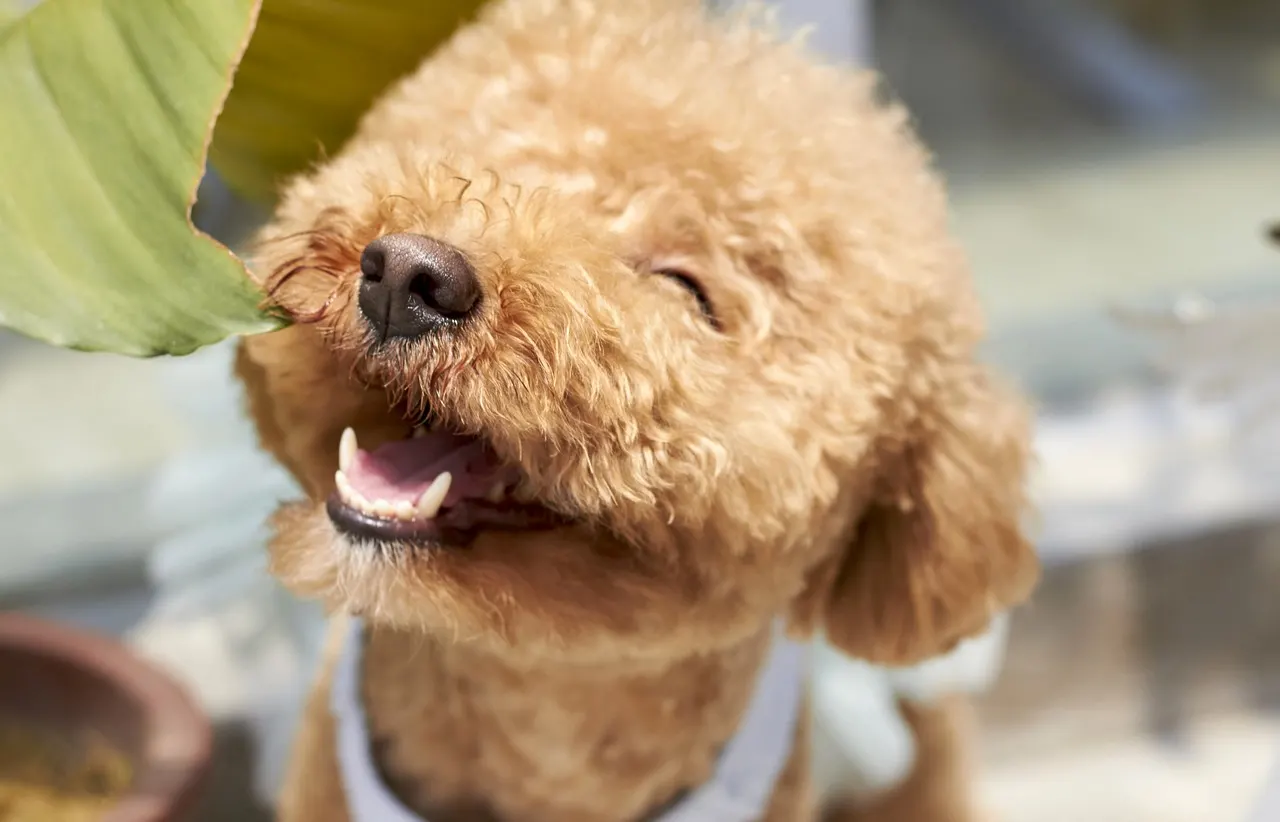
As a dog owner, you should be aware that this distinct texture can be cut, clipped, groomed, shaved, or otherwise manipulated into a variety of forms. That’s why there are so many different Poodle haircuts available.
Coat colors
The Poodle has a wide range of coat colors. Blue, black, white, gray, silver, brown, café-au-lait, apricot, and cream are among the colors in the spectrum.
Poodles are all square in shape, with a long, attractive neck and a straight back. The tail is docked but not clipped, so it can freely wave. These dogs have tiny black eyes and razor-sharp noses. Poodles are available in three sizes: toy, miniature, and standard. These are not different breeds of dogs, but rather different sizes of the same dog.
- The Toy Poodle can reach a height of 10 inches and weigh between six and nine pounds.
- Miniature Poodles are 11 to 15 inches tall and weigh between 15 and 17 pounds.
- The Standard Poodle stands 15 inches or taller (typically 22 inches), and weighs 45 to 70 pounds, while females weigh 45 to 60 pounds.
Poodle personality
Every Poodle owner will characterize their pet in four words: intelligent, affectionate, loyal, and mischievous. The Poodle is also known for having “an air of distinction,” although no one knows exactly what that means, it appears to be a dignified demeanor uniquely observed in Poodles.
Despite his royal appearance, the Poodle has a mischievous side and enjoys playing — he’s always up for a good time. He is also driven by the need to please people. When you combine this with his well-known intelligence, you get an incredibly trainable dog.
One of Poodle’s most striking characteristics is his intelligence. He is believed to have human-like comprehension and to be astounded at his masters’ achievements. Of course, intelligent canines can be challenging to live with. They are quick to notice both positive and negative behavior, and they remember everything.
Protective dogs
A well-trained, well-mannered Poodle has a calm attitude, particularly if he gets plenty of exercise to burn off his natural energy. Toy and Miniature Poodles, according to some owners and breeders, are more high-strung than Standard Poodles; however, some breeders and owners disagree.
The Poodle is fiercely protective of his home and family, and he will bark to warn you if strangers approach. And, while he is devoted to his family, he may need some time to adjust to new people.
Poodles adore their families! So, never tell a Poodle he’s a dog, and never, ever exclude your Poodle from family events. Poodles enjoy many aspects of family life, such as going to soccer practice, running around the beach, and leaping into the water with you. They can’t stand being alone for too long! Remember to keep that advice in mind, but keep in mind that Poodles should still be treated like dogs!
Maltese parent breed standard
Maltese appearance
Because of her fluffy white fur, cute black button nose, dark eyes, and vivacious personality, the Maltese puppy is the ideal lap dog. They’re like little stuffed animals.
The compact Maltese should weigh no more than seven pounds at maturity, with four to six pounds being preferred. Males should be eight to ten inches tall at the shoulder, while females should be eight to nine inches tall. Be wary of breeders who sell Maltese in “teacup” sizes. A Maltese that is under four pounds at maturity is more susceptible to genetic problems and has a higher overall health risk.
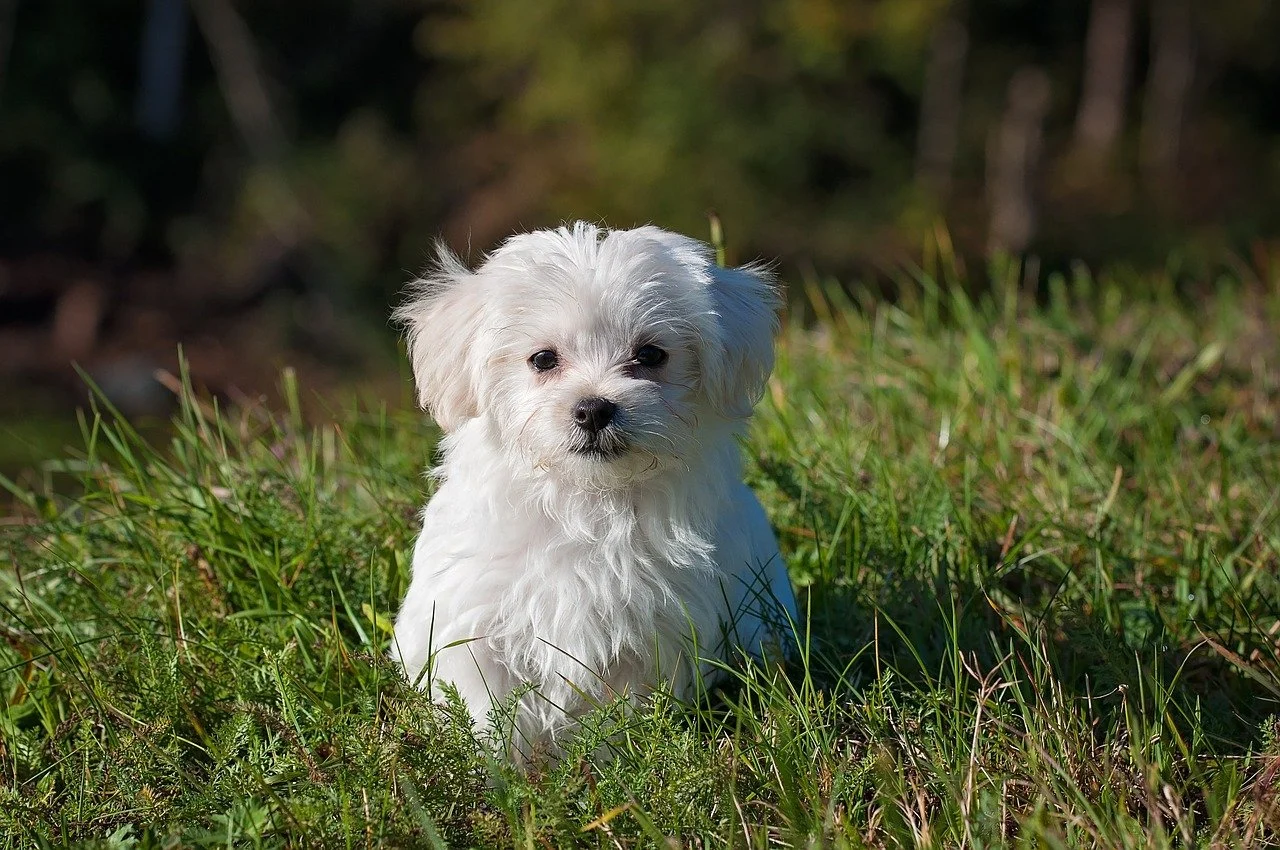
They have small floppy ears and a tail that curls over their backs. The Maltese are small dogs with small, compact bodies. The body is small and the shoulder blades are sloping. The back is flat and the ribs are well-sprung. The tufted tail is carried over the back with ease. The neck is elegantly shaped to allow the head to be held high.
The head is well-matched to the body, and the skull is a little rounded. The drop ears are very feathered and set very low on the head. A black nose and dark brown eyes make this dog look more like a cat. It has a medium-length muzzle with a slight taper.
The coat
The Maltese dog has a long, silky coat that either sweeps or hangs close to the ground. There are many ways to style long hair on the head. You can tie it in a topknot or leave it loose. The coat is pure white. Their white hair is silky smooth and needs to be brushed every day and bathed every few days to keep her regal look.
Maltese dogs don’t shed much. And while no dog is 100 percent hypoallergenic, some, like the low-shedding Maltese, may have a lower impact on allergy sufferers than other breeds.
While Maltese owners who plan to show their dogs will let them keep their long, flowing hair, most people who keep a Maltese as a pet choose to have their hair cut often and have short hairstyles so that it’s easier to keep up with.
Maltese personality
The Maltese are kind, affectionate, smart, responsive, and trusting, among other things. Maltese is a good dog for families because they are lively, playful, vigorous, and like to learn new things. They can get angry when they have noisy kids. The Maltese is a small dog, but it has a fearless personality. The Maltese is very alert and barks a lot when it hears noises it doesn’t recognize.
Maltese are usually peaceful with the world, which means they aren’t naturally powerful or aggressive. The way some people act is different from the way others act. Some are more confident and friendly, while others are more careful or standoffish.
Genetics can play a role in the general temperament of your Maltese. More outgoing parent dogs tend to have more outgoing puppies. But how you raise your Maltese will also play a big role in how he turns out.
The Maltese are very sensitive and respond well to being taught. The truth is that a lot of Maltese are very good at competing in obedience and agility. It’s a shame that house training isn’t the same. Most Maltese don’t do very well at housebreaking.
Full grown Maltipoo breed standard ?
Since there is still no uniform standard for the Maltipoo, the appearance of a puppy can also be different. It can result in a mixture of the two types of fur of the Poodle and the Maltese. Your Maltipoo can look like a smaller Poodle, a small Maltese, or like an equal mix of both.
As a teddy bear dog breed, most Maltipoo puppies have a teddy look. This means they have very dense curly or strongly wavy fur. The curls are larger than the Poodle and due to the Maltese, which has a very soft and fine coat, the hair structure is usually very silky and shiny. If the hair is more like the Poodle, the curls are very dense and much smaller, but these dogs are usually suitable for allergy sufferers.
The size of the Maltipoo varies depending on whether a mini or a toy Poodle was crossed. In most cases a full grown Maltipoo the average weight is 5 to 25 pounds (which is the adult weight) and stands 6 to 14 inches tall. You can say they are little pups.
Full grown Maltipoo size chart
There are three commonly recognized Maltipoo sizes depending on the Poodle parent size. The Maltipoo size chart is as follows:
- Toy Maltipoo – is usually around 5 to 10 pounds and 6 to 11 inches from the withers.
- Teacup Maltipoo – stands under 10 inches tall and should weigh between 4 and 10 pounds.
- Miniature Maltipoo – the bigger version of a Maltipoo, it weighs between 15 and 25 pounds and stands at 11-14 inches tall.
It’s easy for these dogs to look like puppies for most of their lives because of their small stature, round head, and soft ears. It is generally difficult to say how big a Maltipoo will get, not even the breeder can tell you that accurately. But, generally speaking, the more generations of Maltipoos a particular breeder has worked through, the more accurately he or she will be able to predict the puppy’s adult size.
As with any other dog, we can predict a Maltipoo’s full size based on their parents’ size, their generation, mix, and gender. But, Maltipoos are usually a cross using Toy or Miniature Poodles, as the Maltese dog is a toy breed. So, knowing that, there are no Standard (large) Maltipoos.
Coat colors
Thanks to the many coat colors of the parent breed the Maltipoo also comes in a wide variety of shades. The two-parent breeds are responsible for the wide range of Maltese coat colors. The coat colors of an AKC standard Maltese are white, white with lemon, and white with tan.
Poodles, on the other hand, have a wide range of breed standard coat colors to choose from. Poodle coats come in a variety of colors, including apricot, black, brown, cream, gray, red, white, and beige.
Maltipoo coat colors in hot demand include
- White
- Black
- Tan
- Cafe Au Lait
- Coffee
- Red
- Apricot
- Silver
The most common Maltipoo coat colors are white and cream. Parti or two-color Maltipoo’s are also available.
Full grown Maltipoo personality ?
In Maltipoos you have the intelligence and docile of the poodle mixed with the fearlessness and temperament of the Maltese. The result is a cheerful, fun-loving dog for the whole family.
He is fond of children and relatively easy to raise, which is why he is suitable as a beginner dog. He is happy if he can be there everywhere, which is rarely a problem due to its small size.
The posture of a Maltipoo is quite straightforward. The advantage of their small size is that they can also be easily kept in a city apartment. Of course, they need their walks every day, but in general, their urge to move is quite manageable. This can also be satisfied quite well when playing together.
That’s a smart, affectionate, and fun-loving dog. Most people he meets get along with him. People who own Maltipoos say they are gentle and loyal. They like to spend their days sitting on their owners’ laps or walking next to them. They can also be very active and feisty, and they enjoy a good game as much as they enjoy a long hug. They’re very alert and make great alarm dogs, but don’t expect them to protect you. They are just too small for that!
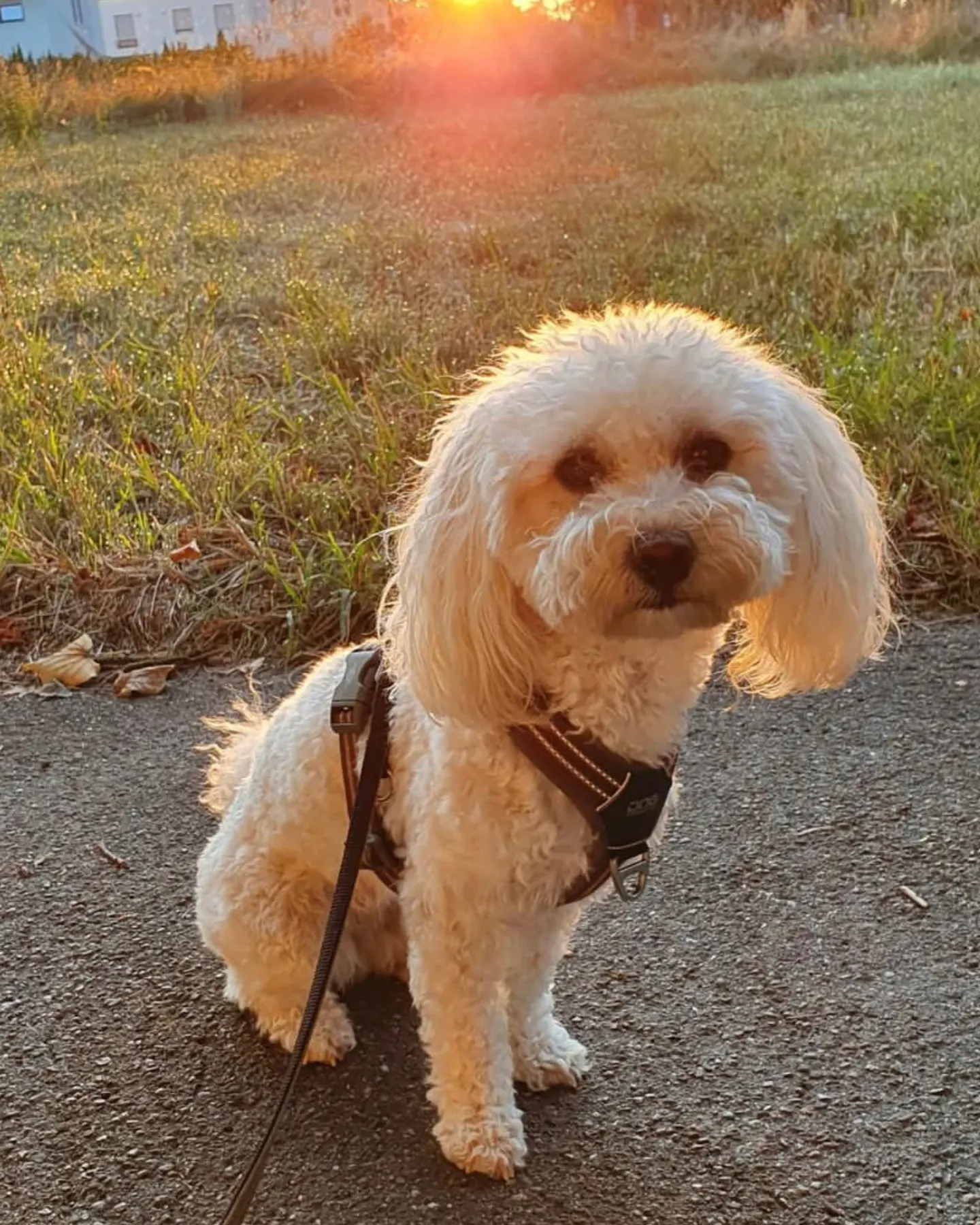
Source: Instagram (@ellamaltipoo)
Socialization of the full grown Maltipoo
Maltipoos, like all dogs, need to be socialized when they’re young. This means they need to be exposed to a lot of different people, sights, sounds, and things. Socialization helps to make sure that your Maltipoo puppy grows up to be a well-rounded dog, which is what you want.
They are very family-loving, usually, quite calm dogs, get along well with other animals, and do not have an above-average hunting instinct. In addition, they have almost no smell of their own, so they don’t “hundle”.
The adorable Maltipoo is the type of dog that is a great choice for almost everyone. They will fit in both large and small households and will give you unconditional love, plus they are fun to be around! We do have to warn you, that these dogs do tend to choose one person as their favorite person. They will love all family members, but they will also bond very tightly with only one person.
When it comes to children, the Maltipoo gets along with kids quite well, but this dog might be a better choice for you if you don‘t have kids that are at a very young age.
Full grown Maltipoo training and exercise ?
A small dog must also be trained, which is quickly forgotten. In contrast to a large dog, you can easily hold it on a leash during walks, but it is certainly much more pleasant if it is obedient and becomes a pleasant companion even without a leash.
Maltipoos are attentive and intelligent – so they have all the prerequisites for easy-to-implement training. If you are a new dog owner, you should enroll your dog in puppy kindergarten or hire a professional dog trainer.
Maltipoos are people-oriented dogs who should be kept indoors with their family rather than outside or in a kennel. They are excellent apartment dogs if given daily exercise and not allowed to become nuisance barkers. They can adjust to living in large houses as well as small apartments.
The Maltipoo is a smart dog who responds well to training. You’ll be successful in no time if you use positive reinforcement strategies like food rewards, play, and praise.
Exercising your full grown Maltipoo
Maltipoos are lively dogs who require daily exercise to remain healthy, happy, and out of mischief. Excess energy can lead to destructive behavior, and you’d be surprised how much damage a bored, little dog can cause. Every day, give your Maltipoo 30 to 40 minutes of exercise. A quick walk, some playtime in a fenced yard, or a decent game of fetch down a corridor would suffice.
Maltipoos can be boisterous and can bark to alarm you if they detect something or someone suspicious. Before getting a Maltipoo, think about this trait, especially if you live in a building with noise limitations. As already mentioned before, the important thing to remember is that socialization training is a must.
How to take care of your Maltipoo?
The Maltipoo has a fluffy, soft, wool-like coat that sheds little and produces little dander. This is why they are considered to be hypoallergenic dogs. It varies in length from medium to long and is somewhat wavy to curly. The coat is available in a range of hues, with cream, white, and silver being the most popular.
To maintain his coat clean and clear of mats, the Maltipoo requires daily brushing, you can use a slicker brush. Many Maltipoos get their tails cut to keep them looking neat and cool. Generally, a Maltipoo only requires clipping once or twice a year, but his head will need a monthly haircut.
Coat care
You should bathe your Maltipoo at least once a month to keep its coat silky and clean. Also, take care of the hair around your dog‘s eyes. it is important that you trim it regularly. Keep the ears clean as well since they collect dirt, debris, and moisture. If you don’t clean your dog‘s ears regularly, you are risking them getting an ear infection.
Dental hygiene andnail care are two very important grooming requirements as well, but many owners completely forget about them. Brush your Maltipoo’s teeth at least twice or three times a week to prevent tartar and bacteria from forming. Every day is preferable to prevent dog dental problems. As needed, trim his nails once or twice a month. They’re too long if you can hear the nail clicking on the floor. Short nails keep your Maltipoo’s feet healthy and won’t scratch your legs when he jumps up to meet you.
To get your Maltipoo used to grooming, start when he’s a puppy. Handle his paws frequently – dogs’ feet are sensitive — and inspect his lips and ears. Make grooming a pleasurable experience for him, complete with praise and rewards, and you’ll be setting the stage for smooth veterinarian tests and another handling when he’s older. Check our homepage The Goldens Club for more material on Maltipoo.
Health issues of the full grown Maltipoo ❤️
Despite being a new breed, the little Maltipoo is quite robust and generally healthy. There are no typical hereditary diseases like you would find in its parent breeds. But, just like any other dog they can get sick and can deal with several health concerns:
- Shaker syndrome – Tremors throughout the body, a lack of coordination, and fast eye movements are all symptoms of White Shaker Syndrome. Episodes usually begin when the dog is anxious or extremely stimulated, between the ages of six months and three years. This is a non-painful ailment that does not affect the dog’s disposition. Consult your veterinarian about treatment options if you feel your Maltipoo has White Dog Shaker Syndrome.
- Patellar luxation – A common condition in tiny dogs. It is caused by a misalignment of the patella, which is made up of three parts: the femur (thigh bone), patella (knee cap), and tibia (calf). This results in limb lameness or an irregular gait, similar to a skip or a hop. It’s a condition that’s present from birth, albeit the actual misalignment or luxation doesn’t necessarily happen right away. Patellar luxation causes friction, which can lead to arthritis, a degenerative joint condition.
Other health problems of the full grown Maltipoo
- Skin problems – The most common types of dog skin conditions include contact allergies; bacterial infections; fungal infections, and parasite allergies.
- Eye problems – Your dog can suffer from many eye problems and eye diseases, including allergy, infection, corneal ulcer, chronic dry eye, and glaucoma. Painful eyelid afflictions, such as entropion, tumors, and skin infections are common too.
- Allergies – The most typical sign of allergies in dogs is itching of the skin, which can be localized (in one place) or broad (all over the body). Coughing, sneezing, and/or wheezing are some of the symptoms that affect the respiratory system. There may be a runny discharge from the eyes or nose at times.
What to know about the health of your full grown Maltipoo
Difficulties can also sometimes arise due to their fur. If the hair is too long, and if you neglect to groom, strands of hair can get into your Maltipoo‘s eyes which can cause eye inflammation. In addition to those health problems, skin problems are quite common too.
You can reduce the risk of your dog getting sick with a balanced diet and provide them with enough physical exercise and mental stimulation. Besides that, regular checks at the veterinarian are a must too. We always encourage dog owners to take their dogs to regular checkups. That is the best way to spot health problems early on.
If you want a healthy dog, the best way to do that is to get a reliable breeder that specializes in Maltipoos. You can look up Maltese breeders or Poodle breeders, but your best chance of getting a healthy Maltipoo is to find a breeder that specializes in this designer dog.
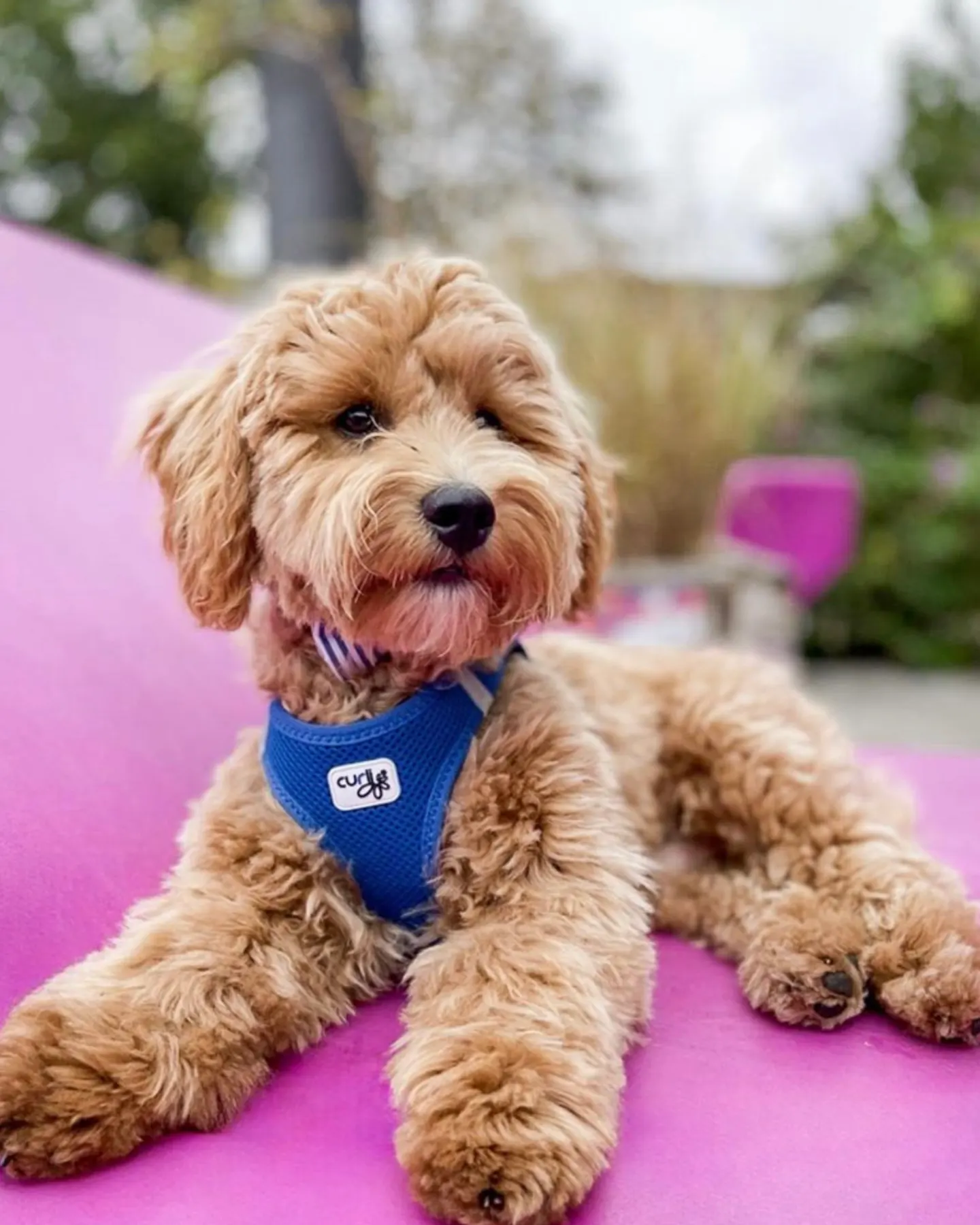
Source: Instagram
Full grown Maltipoo FAQ ?
How long do Maltipoos live? What is the lifespan of a Maltipoo?
Maltipoos have a lifespan of 10-15 years due to their small size and lack of health issues. You should also know that many things influence the amount of time your Maltipoo will live including the food your dog eats, activity, and exercise amount they get as well as their overall health.
Do Maltipoos bark a lot?
Not really, at least not normally. Both parent breeds aren’t known for being overly vocal, and the Maltipoo shouldn’t be either. However, you have to bark train your dog from when he is a puppy. That way he will know not to bark excessively for no reason at all.
Are Maltipoo dogs easy to train?
As a Poodle mix, the Maltipoo is known for his high intelligence. These dogs are eager to please, and training them shouldn’t be a problem, even for beginners. Make sure you use positive reinforcement and give your dog lots of verbal praise and treats.
Do Maltipoos get attached to one person?
Yes, they do! While Maltipoos will get close to all members of one family, they will choose one person that will get most of their attention. You can’t really predict who that person will be, because every dog is different. Just don’t get jealous because the Maltipoo has enough love for everyone.
When do Maltipoos reach maturity?
Physical, mental, and sexual maturity are the three elements of maturity. The Maltipoo reaches each at a distinct age, so at different ages. After they reach each of these traits fully, you can consider your Maltipoo as totally mature.
Physical Maturity
The skeletal system of a Maltipoo matures between 10 and 12 months of age, yet many dogs acquire fat and muscle until they are 18 months old. They should stop developing after that.
Mental Maturity
As a Maltipoo approaches adulthood, mental maturity develops gradually. Puppy-like behavior usually fades soon before the one-year mark, but it may take several months for it to completely disappear.
Sexual Maturity
Maltipoos may show signs of sexual maturity as early as 4 months old, because tiny breeds mature slightly faster than larger breeds. Both males and females are normally capable of reproducing by the age of six months.
Are Maltipoos hypoallergenic?
Because Poodle mix dogs are “hypoallergenic,” there should be less chance of having an allergic reaction, which makes them more popular. It’s not possible to have a dog that doesn’t cause allergies at all, but Maltipoos are very close. People who are allergic to dogs might like these dogs because they don’t have as much dander as other breeds of dogs.
Do Maltipoos shed a lot?
In general, Maltipoos don’t shed very much, if at all. But, because these dogs have mixed genes, it is hard to tell whether their coat will look more like that of a Poodle or a Maltese.
How much does a Maltipoo cost?
There are two ways to get a Maltipoo: You can adopt full grown Maltipoo from a shelter or buy from a good breeder. The price can be anywhere from $600 to $4,000. There are also other things to think about when it comes to the price, such as health guarantees, microchipping, and other things, too. So please don’t go for the cheapest puppy on the market, chances are they are very sick!

